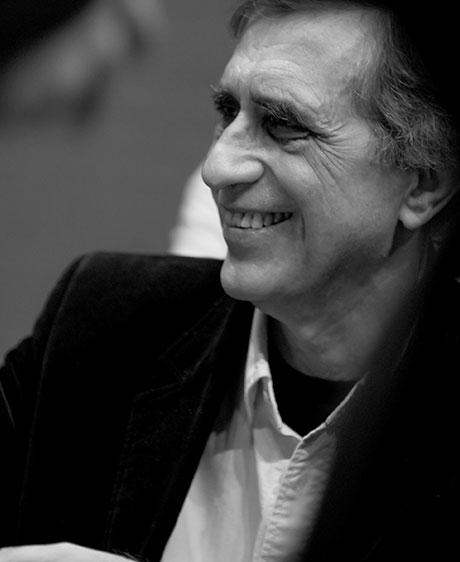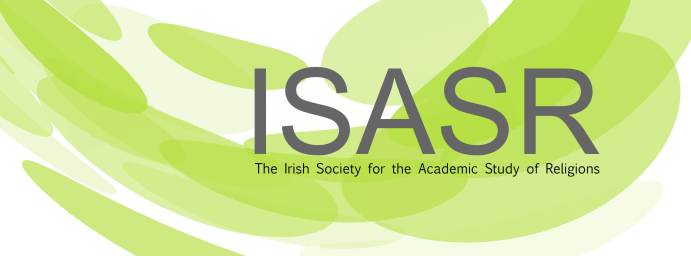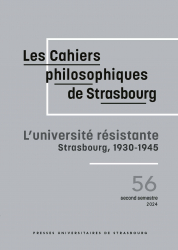
Décès de Michel Cazenave
27 août 2018
Journée Henry Corbin 2018 : Images, rêves, apparitions
10 octobre 2018
Amin SHARIFI ISALOO
Liminality and Experience: The 1979 Revolution in Iran and Shia Religious Symbols
The Journal of the Irish Society for the Academic Study of Religions
no. 6, p. 60-83, PDF (326 Ko)
ABSTRACT
Drawing on Victor Turner’s emphasis on the importance of symbols and his analyses of liminality together with Wilhelm Dilthey’s explanations of experience, and considering the mimetic theory of René Girard, this article focuses on the 1979 Islamic Revolution in Iran to explore Shia religion, particularly its symbols, before and after the 1979 revolution in Iran, where religion and politics influence each other. It demonstrates how a Shia ritual performance such as Ta’ziyeh and its symbols played key roles in mobilising crowds for the revolution, and how these symbols began to dominate political life, pervade all levels of society, and enable political actors and revolutionary clerics to legitimise their actions and violence after the revolution. In other words, it investigates how, under such liminal condition, Shia Muslims means of commemorating the past shapes their present and future.
KEYWORDS
Religion, revolution, Ta’ziyeh, liminality, symbols, Iran, culture, imitation, sacrifice, ritual
Amin SHARIFI ISALOO
Has a PhD in Sociology and he teaches sociology in the Department of Sociology at University College Cork. He is the author of the book Power, Legitimacy and the Public Sphere: The Iranian Ta’ziyeh Theatre Ritual (Routledge, 2017). His fields of interest include politics, religion and culture, focusing on sociological and anthropological interpretations of symbols, images and ritual performances.
Extrait des pages 71 à 73 où l'on parle de Henry Corbin
« After the 1979 Revolution, Khomeini, under the concept of velayat-e faqih (guardianship of the Jurist), transformed the Iranian religious and political settings and made Shia Islam an inseparable element of political structure. In his speeches, Khomeini condemned democratisation, westernisation, modernisation (similar to the West), capitalism, and communism. In contrast to the Pahlavi dynasty, he tried to Islamise all institutions and organisations. He even closed down all universities in Spring 1980, and nominated Abdolkarim Soroush and others as members of Shoray-e Englab-e Farhangi (Advisory Council on Cultural Revolution) for Islamising universities.
Soroush played a role in the victory of the 1979 Revolution and engaged actively in forming and establishing the Islamic Republic of Iran, which was Khomeini’s desire in his book ‘Islamic Government’ (1970). He is now tracking Sufism and believes that Khomeini never reformed Islam as a group of doctrine, but he tried only to empower Islamic identity (Soroush 2010). Calling this ‘political Islam’ and criticising it, he conceptualises religious democracy and proposes an ‘Islamic democracy’ (Soroush 2000). The debate on ‘Islamic democracy’ is beyond the scope of this article, but it is necessary to highlight that there are two significant issues with these analyses of Soroush. First, he generalises Khomeini’s reform, disregarding that Khomeini’s reform did not empower Islamic identity, but only Shia identity. Second, he does not explain why he categorises Khomeini’s ‘Islamic government’ or reform as ‘political Islam’, but he exempts his own proposed ‘Islamic democratic government’ from this category.
A brief outline of Sufism in Iran is necessary due to Sufis responses either to modernity (or to the secular modernism) and to the 1979 Revolution. Sufism is Islamic mysticism, which is an aspect or dimension of Islam. In Lewisohn’s (1999, xv) words, it is ‘principally a school of the Unity of Being (wahdat-e wujud)’. Although Shia Sufism’s origins begin after the Arab Muslims conquest of Iran, which led to the end of the Sassanian Empire in 651 AC and later to the decline of Zoroastrian religion, ‘they are not often thought to occupy an historical locus, i.e. one restricted by temporal and spatial dimensions’ (Van den Bos 2002, 31).
Ali Shariati and Corbin were Massignon’s[1] research assistants, his student and successor respectively. Both had attempted to redeem ‘authenticity’, but Shariati’s idea of ‘baz gasht be khishtan’ (return to the self) remained a socio-political ideology, while Corbin’s idea of ‘return to origin’ is understood as a mysticism trying to stay away from petty politics (Shayegan 1990, 280 cited in Van den Bos 2005, 120). Later, Heidegger’s [72] intellectual influence on Corbin convinced the latter to bring Heidegger’s hermeneutics to Iran, together with his Western criticism, which in turn influenced spiritual perspectives of Shia thinkers who were in Corbin’s circle (ibid: 36). Shariati, who had studied in Paris and was influenced by French and German Marxists, also caught national attention and played a significant role in politicising and revolutionising Shi’ism in Iran at the time, especially by his writings such as ‘On the Sociology of Islam’ (see Shariati 1979). Unexpectedly, Iranian Shi’ism became promptly politicised, and Khomeini’s rhetoric sped it up in the 1970s.
Both Shariati and Corbin died before the 1979 Revolution, but there is still debate between their followers. For instance, Reza Davari Ardakani, one of the students of Corbin, who refers to Heidegger’s critics of the West in his philosophy, was engaged in a series of philosophical debates against Soroush (Van den Bos 2002, 43). Ardakani criticises contemporary modernity in the West and recognises the only redemptive path for Iranians as leaving the West as an integrated whole. In contrast, Soroush takes sympathetic approaches to the West, known as the Popperian approach, and tries to justify modernism by a philosophical analysis of religion (Roohani et al. 2014), particularly after settling down in the US. Kayhan-e Farhangi (Cultural Universe) magazine published a series of Soroush’s articles entitled ‘Qabd va Bast-e Ti’urik-e Shariat’ (The Theoretical Contraction and Expansion of Islamic Religion), which laid the foundation of Soroush’s epistemological approach to religious modernism (Jahanbakhsh 2001, 142). By welcoming modernity, Soroush criticised tradition, with ups and downs in his intellectual constellation. His philosophical discourses and debates during the first decade of the 1979 Revolution do not show his enthusiasm to modernity, but in some cases present him as an adversary to modernity and technology. Soroush gradually shaped a combination of modernist, post-modernist and mystical ideas in the second and third decades of the Islamic revolution, particularly during the ‘reconstruction’ and ‘reform’ influenced by the post-modernist environment in the world (Roohani et al. 2014, 556).
The problem with Corbin’s analysis of Shi’ism was his ignoring the revolutionary potential in the Shi’ite concept of martyrdom and its symbols, while the problem with Shariati’s analysis of Shi’ism was his inspiration by the political and revolutionary Shia, without considering its dangerous potential, which already was experienced during the French and the Russian revolutions. Now, the problem with Ardakani is his acceptance of a totalitarian system in Iran (Isaloo 2017).
In contrast, the most considerable issue of Shoroush’s explanation of Islamic democracy is disregarding the scapegoat mechanism, sacrifice, memetic desire, and Shia symbols and images that political actors and the corrupted [73] religious leaders are able to utilise during the liminal periods, such as the 1979 Revolution, and ignoring issues of his proposed ‘Islamic democracy’ in Iran.»
[1] Louis Massignon (1883-1962) was a scholar of Islamic mysticism and a professor at the Collège de France from 1925 onwards. He had also been a priest and a dedicated member of a small but international Catholic group of mystics.

1 Comment
[…] – Enlace a artículo – […]